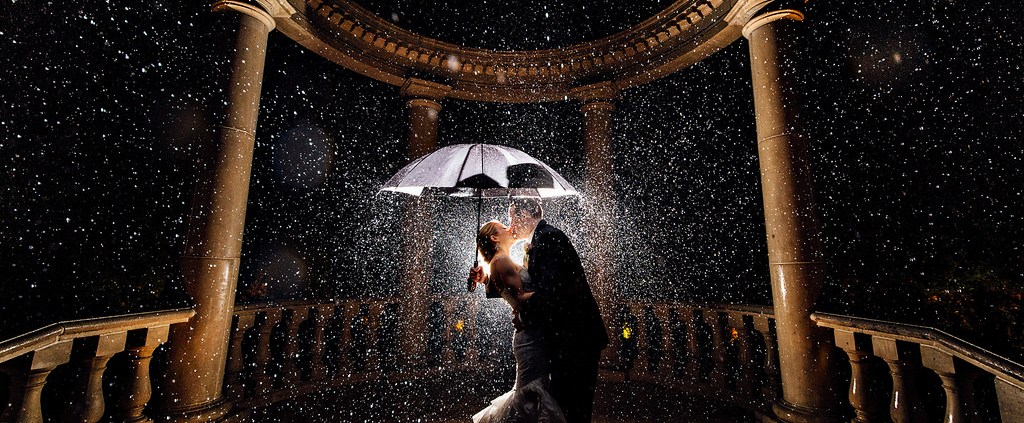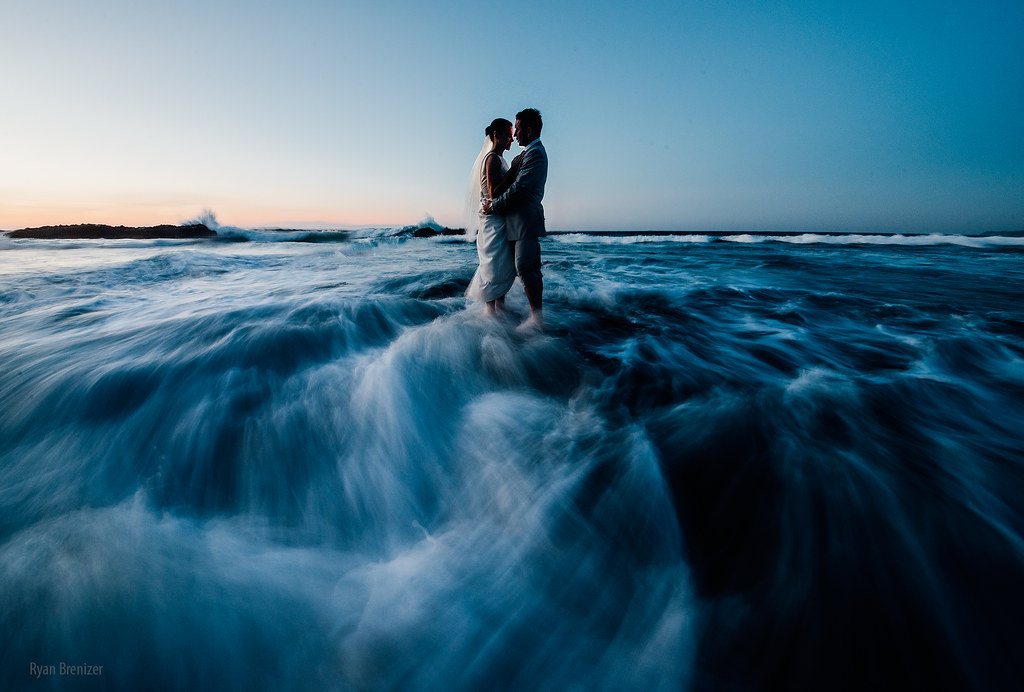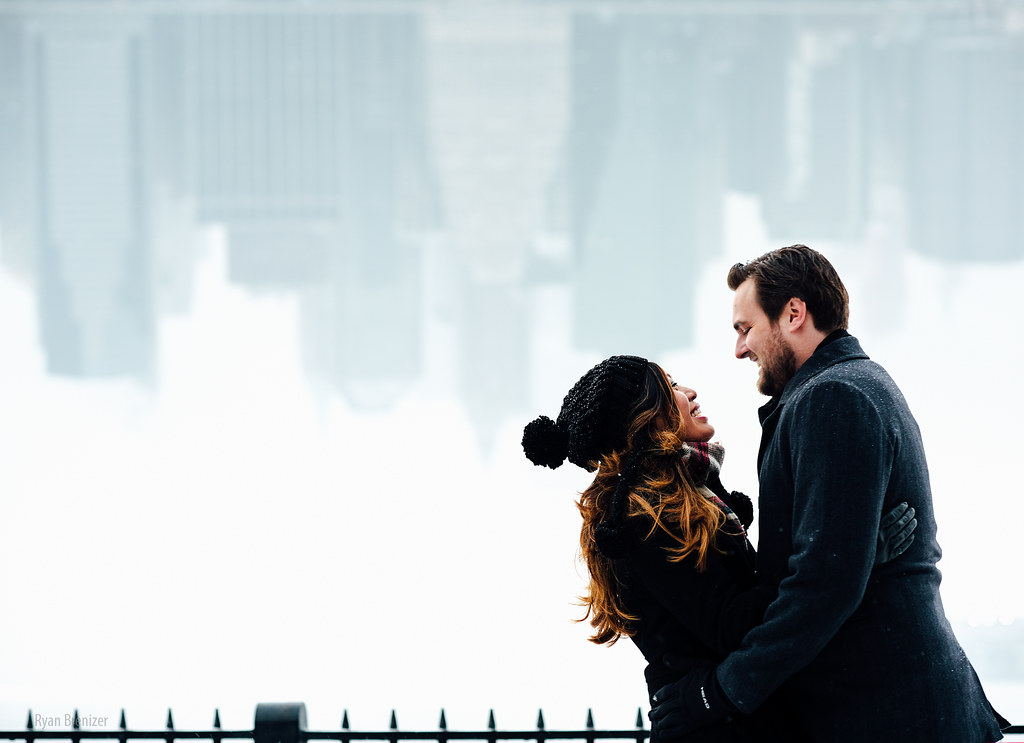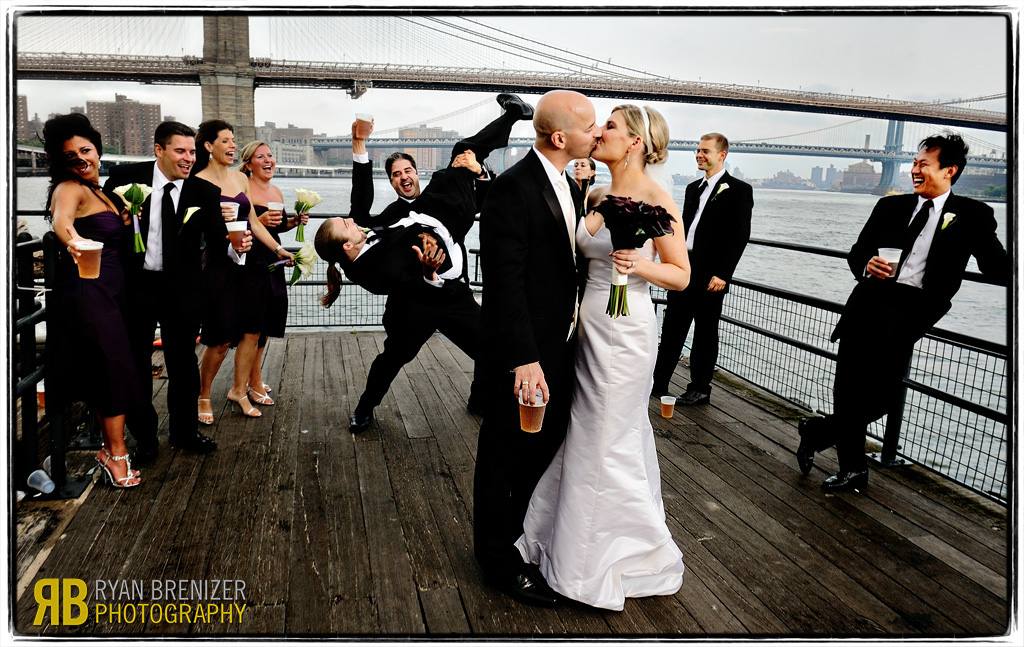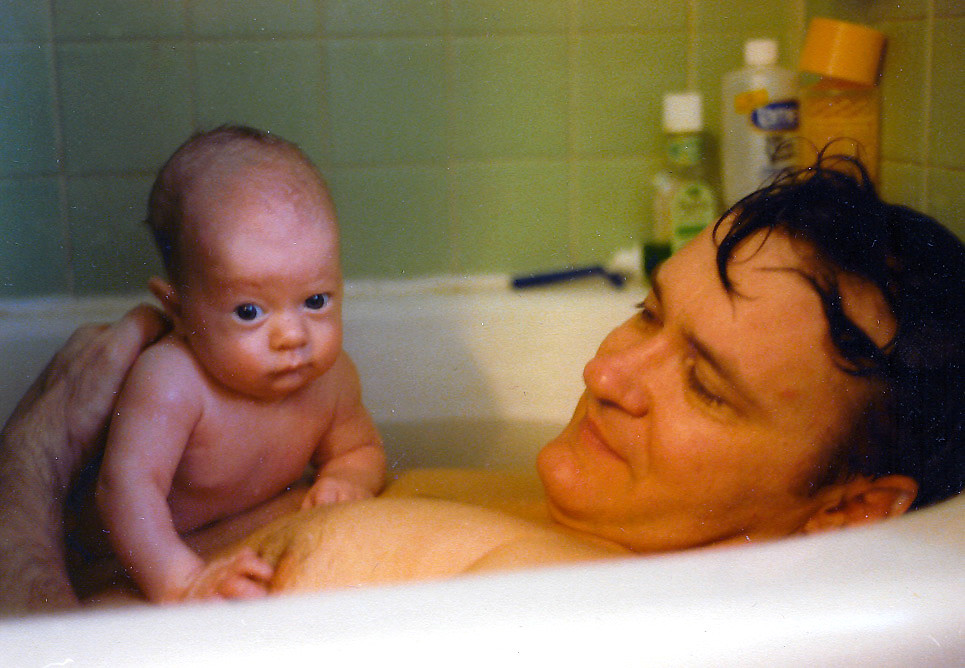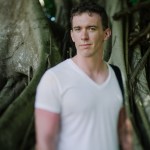
New York photographer Ryan Brenizer has spent his whole life running from boredom. Somehow this chase led him to the world of wedding photography—where he skillfully manages the chaos and unpredictable nature of a wedding day to capture the most authentic and beautiful moments possible. His success in doing so has led him to being named one of the Top-10 wedding photographers in the world by American Photo and Rangefinder Magazines.
Growing up, Ryan witnessed his parents’ love of taking photos. They would take sometimes 30, 40, 60 photos a week just of family. People would make fun of his mother all the time for taking two rolls of film just because it was somebody’s birthday. But from early on, this instilled Ryan with a sense of social documentation. In college he pursued fields of writing and editing, which put him in a good place to fall into photography.
During one of his early photography jobs at a university, an important thing happened: He was forced to learn the discipline of shooting photos every day in very boring situations like lectures and luncheons, where nothing inherently beautiful was happening. This taught him to observe the intricacies of human expression. “All you have is learning to anticipate when they might make a good expression,” he said. “What can make a good photo in a bad situation.”
Another important thing happened during that time. To push his love of storytelling as a writer into this new-found passion of photography, Ryan enrolled in a photo documentary class. For his final class project, he chose to follow an up-and-coming underground comedian in New York. At the end of the project, she announced that she was getting married. The wedding took place at a punk rock club, and he covered it like a photojournalist.
What he didn’t know was that this pivotal event would spark his love for storytelling and his need to run from boredom, and plunge him headlong into a career where he would embrace the chaos of the ultimate story: the wedding day. “After shooting every day at a university where the hint of a smile is the most emotion you get, then to come into a wedding where people are crying and hugging and laughing and dancing—immediately I was like, these are the stories I want to tell.”
Around that time he discovered the Wedding Photojournalist Association and became interested in the idea that you could take this storytelling aspect and apply it to wedding photography. He also drew from his own personal experience growing up loving weddings, due in part to having a huge Irish family that loved to party.
But he didn’t love weddings the way that the wedding industry wants to tell you to love them. He loved them because he loved to dance and he loved to hang out with his family. “It was the way for a whole room of people to say, we all love each other and want to celebrate this thing,” he said. “It’s a bigger, broader story.”
You are considered one of the Top-10 wedding photographers in the world. How did you get to this place?
It’s an intensely long road and it kind of has to be. This is not an industry where you can just make it and then coast. I think everyone who is in this position, in this industry, and has been for a while, has gotten there due to an incredible amount of work. The idea really of what a wedding photographer is, is many different things. It is not just being the best at taking an exposure, but working with people, creating a good experience, as well as being innovative and forward-thinking with your photography.
How has your background, both personally and as a photojournalist, influenced your wedding photography?
The thing about wedding photography is that it really takes every bit of you. There is incredible pressure all the time, and you have to be the kind of personality that enjoys that. Every part of you shows up in it, your personality, and also your background.
I know wedding photographers who used to be writers and I think they photograph like writers. I know wedding photographers who used to be architects and I think they photograph like architects. You can really see that in their work because their work is taking a little bit of all of them. I’ve always had a deep understanding of what storytelling means to me—of creating that feeling through a photo, or through a series of photos that, not only can you look at them and appreciate them, but that you can almost hear them.
A lot of my priorities and the importance I place on my photography come from my own experience. My father passed away when I was eight, and all I have of him are photos, and not that many. Every time I would see a photo of him I hadn’t seen before, it was such a treasure to me, and I want more. And when I say, what kind of photos do I want more of? I’m not thinking, boy I really wish I had an incredibly artistic photo that made him look like a bad-ass or just had really great bokeh. I’m saying I really want more photos of him that show who he was. Especially how he loved my mom, how he loved me, those are the ones that are an absolute treasure.
On your website, you describe yourself as a problem solver and a storyteller. Why these two things?
Nobody is relaxed about anything in New York. Shooting a wedding in New York is like playing a video game on hard mode—you don’t have a lot of natural light, you have a lot of cavernous spaces, you have people in the background everywhere, it’s hard to get from one place to the other.
Of course for weddings in general there are always problems, but we have had to learn to deal with a lot. We started realizing that it’s very important to our clients to make them as calm and as happy as possible, because then we can take photos of calm, happy people. If you have clients who are stressed and uncomfortable in front of the camera, it doesn’t matter how good you are at taking photos, you are going to be taking photos of stressed, uncomfortable people. They are going to look at those photos the rest of their life and they are going to remember how stressed they were and uncomfortable they were. It really was about: How can we show our clients that if these problems arise, we’ve got your back?
You have taken millions of amazingly beautiful photos. Is there a photo you are most proud of or that you would call your favorite?
I always want to take photos that you would love more if you know the people. And so, there’s a whole list of photos I’ve taken of Tatiana (Ryan’s fiancee pictured below, right before he popped the question), of my parents, things like that would really top the list. But professionally one of the moments that make photos really meaningful for me is when I’ve had people come back and tell me that this photo that I’ve taken of them is the first photo of themselves that they’ve ever really liked.
Obviously professionally, being the only person to be able to photograph Obama and Romney together when they were actually nice to each other was a wonderful, wonderful moment. It’s an incredible professional moment for me, because we are viewing a window in history. A lot of people photograph the President, but no one has gotten to see these people together like this. Romney and Obama were never together, other than the debates and this one time, and they did not like each other.
They were only friendly for those five seconds. They were sharing one little joke just for the sake of the event and then they just went to their separate corners. But I got to be there, and I got to be the only one there. To be in a place where you’re the only photographer, not only is it an honor, but it also means that they’ve let their guard down in a way that doesn’t happen when there’s a hundred photographers there— you’re seeing them as different people.
https://www.flickr.com/photos/carpeicthus/8101715955/
You have said many times in lectures and workshops, that you have no secrets as a photographer, both in your techniques and your business practices. What is your best advice to share with the Flickr community?
The short answer is, don’t stop. I really think that the most important thing and the thing that separates people in general who become successful, and especially photographers, is don’t stop. From very early on, be a little selfish. The really important thing is don’t burn out. Do whatever it takes to create the conditions so that you won’t have to stop.
Try and do the things that are keeping it fun, and find the things that are dragging you down, that are making you not want to pick up your camera, and see what you can do to get rid of those. Amateurs actually have some tremendous advantages; because they get to work on just doing what they really love, but the disadvantage is that no one is forcing them to work. If you are a professional, you can’t stop.
Pay attention to what you procrastinate on, pay attention to the things that are keeping you up at night, that are taking the joy out of it, and do whatever you can do to keep the joy in it. Not only does this make your life better, but it will make you a better photographer in the long run.
When I came on Flickr there were all these people who I really looked up to and the only difference is that most of those people are not doing what they did now. Something got to them. The only difference between them and me is that I’m still here — and I’m not super-human.
If life is a grind and you just say, I’m just going to grind away, eventually you have to stop, because you realize wait, my entire life can’t be a grind. So if you can make your work enjoyable, whatever that is, if it means taking breaks, if it means delegating, if it means being selfish in some ways, that’s actually the best thing you can do in the long run.
You know, we got into this because we loved it and the most important thing is to keep that love however you can. If you’re not passionate about it, you’ve already lost.
You were very kind when you agreed to do this interview with us at Flickr, and even
went so far as to say that Flickr was huge for you starting out as a photographer. Can you tell us why?
Early on along the way, I stumbled across Flickr, which was in its early days. I was turning out these photographs, improving in the nuances of photography, and then I had this real feedback loop. When I started Flickr, I was putting up random snapshots of anything. You still can see these terrible reject photos on my early Flickr account. Then, six months later, I would put up some of the professional work that I had done and people started commenting that this was really neat. I didn’t know anyone was even looking at this. People would start saying, this is great, now you can look at what I’ve done. I was building a real professional rapport and realizing that there was a broader world for consumption of photography.
The groups were also immensely helpful. I am actually the admin for the two largest wedding photography groups on Flickr. The one that’s been very important to me is SWPB: Succeeding as a Wedding Photography Business. Not only has it helped so many people in their professional development, but also it has really given me some of my best friendships.
Every day, people who are closest to me, people who have that same professional understanding—we help each other out at every level. Not only has Flickr launched a lot of great careers, everyone from Jonas Peterson to Dylan and Sara to Sam Hurd, but even people who are just starting out or related to the industry have become great friends—some of my favorite people in the world.
What advice can you offer to Flickr members who are just starting out on their journey with photography?
The more involved you are on Flickr, the more you’ll get back. Not only will you get things out of it in terms of photography, but there you will find a collection of people who share the same passion as yours.
When I was just starting out almost ten years ago, I did meet-ups and parties, and those are still going on. If it’s a fun time for you, then you will get better. It’s all the other stuff that’s hard, because photography is fun. As long as you keep it fun for you, you’re going to keep getting better because you’re going to want to do it.
***
Thank you so much, Ryan, for taking the time to share with us your photography, your life, and your passion.
In March, Ryan will be speaking at Gulf Photo Plus in Dubai, the region’s biggest photography festival. The event brings the world’s best photographers and instructors together to share their knowledge and experience with the professional and amateur photography community in the Middle East and Africa.
To learn more about Ryan, the problem-solver and storyteller, visit his Flickr photo page or his website.
